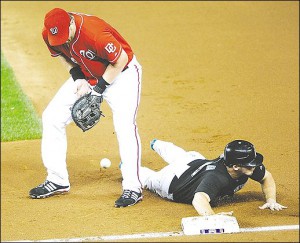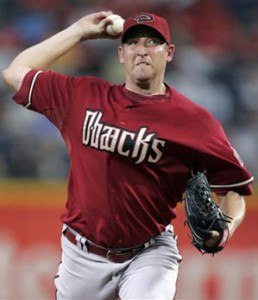Several years ago, I began a rant about the Nats payroll levels vis-a-vis our market size that essentially continues through to today. Washington DC as a market is clearly a large market:
- We are 7th in total population (when measured by Metropolitan Statistical Areas); just behind Miami/Ft. Lauderdale and Dallas and just ahead of Houston and Detroit.
- We are 9th in terms of DMA TV households (just behind Atlanta/Boston and just ahead of Houston and Detroit again).
And yet, in 2010 we had the 23rd ranked payroll of the 30 teams, spending just $66M in salary (2010 opening day number). Meanwhile the teams located in comparable cities spent much much more. Houston had a $92m payroll, Detroit $122M, Atlanta $84M. Miami and Boston are outliers for separate and obvious reasons (Boston essentially services the entire NE area while the Florida Marlins owners are the worst examples of owners taking advantage of the revenue sharing system in the league).
According to my estimates (available here or via the link in the Nats Creations section to the right), the Nats (as of publication) have $29M committed for 2011, and likely will have a payroll that is around $46.5M once all arbitration cases are settled. Notice this is almost exactly $20M less than in 2010 (Dunn at $12M and Guzman at $8M neatly equal the delta).
Clearly, the Nats need to be increasing payroll. I’m pretty sure this is one of the reasons Kasten left the team frankly; I don’t think he saw eye to eye with the Lerners in terms of payroll outlay. Certainly not in terms of the 2009 opening day roster team, which was an abomination of a roster and successfully gutted the season ticket base and fan satisfaction leading into the new stadium.
BUT, and this is a large But, we should not just arbitrarily spend money just to spend it. So we have a conundrum. With Vazquez and De La Rosa off the market, the FA pitcher market is, as Jayson Stark put it, a disaster area. With the exception of an experimental flyer on Webb, I wouldn’t want a single guy left. Jon Heyman ranked the top 15 or so FAs and it has to be one of the weakest FA markets ever. Of the hitters out there, we definitely could use them (especially Werth in right and Crawford in center, as well as the probable eventual signing of Pena for 1B), but the question is, will they come to Washington? Why come to the Nats if a perennial playoff contender comes calling with more money and longer guaranteed contracts? Isn’t that why Dunn just left?
Tom Boswell put out a post expressing some worry about the Nats and this off season, only somewhat alluding to the payroll issue. And I agree. Who knew that we’d be seeing a spending spree this off season, after two relatively frugal off-seasons preceding it. Now that Dunn has left, one has to wonder what the team really should do.
I’m afraid the Nats are stuck frankly. We have money to spend, and NEED to spend money to show some good will towards a fan base that clearly sees the Lerners as incompetent, penny pinching and too cheap to really deserve a $600M baseball team. But, who are we going to spend this money on? At this point the best moves seem to be to try to acquire guys via trade ( Greinke or Garza come to mind) but these guys will cost us what few prospects we actually have right now. Is it worth it to give up 4 upper end guys to acquire 2 years of Greinke’s services?
As much as I hate to say it, I believe the best course right now is to NOT spend money, play out 2011 with what we have (and perhaps a couple of lower end, one-year FAs) and regroup for 2012. Let our prospects play and get experience, find out if the likes of Espinosa, Desmond, Morse, Morgan, Bernadina, Ramos, Zimmermann, Maya and the rest of the bullpen are really quality guys. Trade Willingham for more kids. Wait for Strasburg to get healthy. And go firing into NEXT off season with a vengeance.

